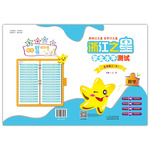题目内容
Why don't you go for ________walk?It'll give you ________appetite for your lunch.
A. a;/ B. a;an
C. /;the D. /;an
练习册系列答案
 浙江之星学业水平测试系列答案
浙江之星学业水平测试系列答案 高效智能课时作业系列答案
高效智能课时作业系列答案
相关题目
题目内容
Why don't you go for ________walk?It'll give you ________appetite for your lunch.
A. a;/ B. a;an
C. /;the D. /;an
 浙江之星学业水平测试系列答案
浙江之星学业水平测试系列答案 高效智能课时作业系列答案
高效智能课时作业系列答案